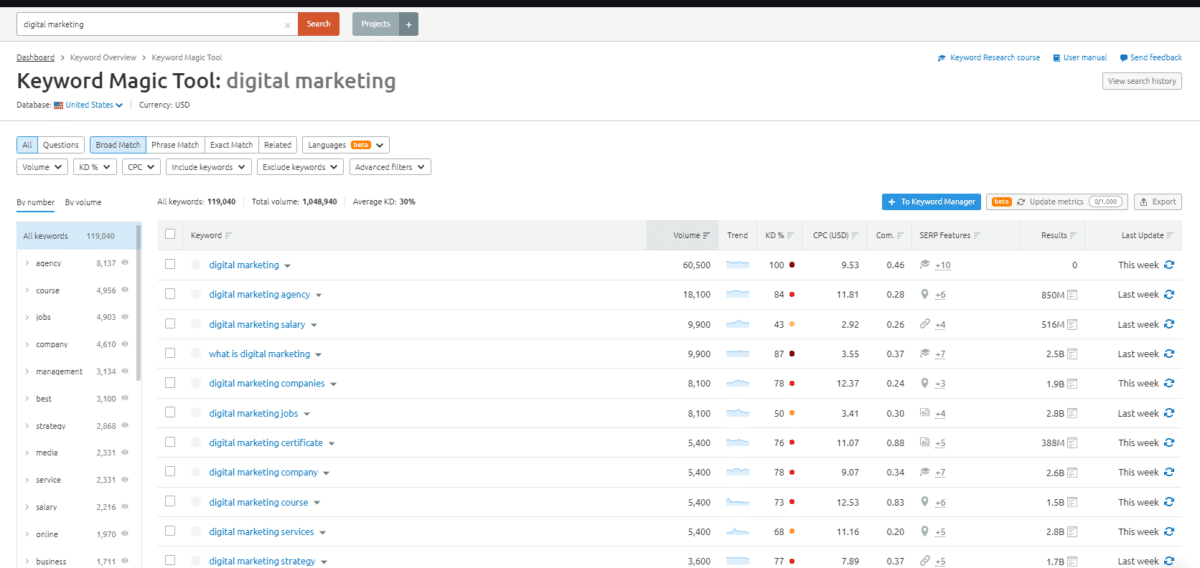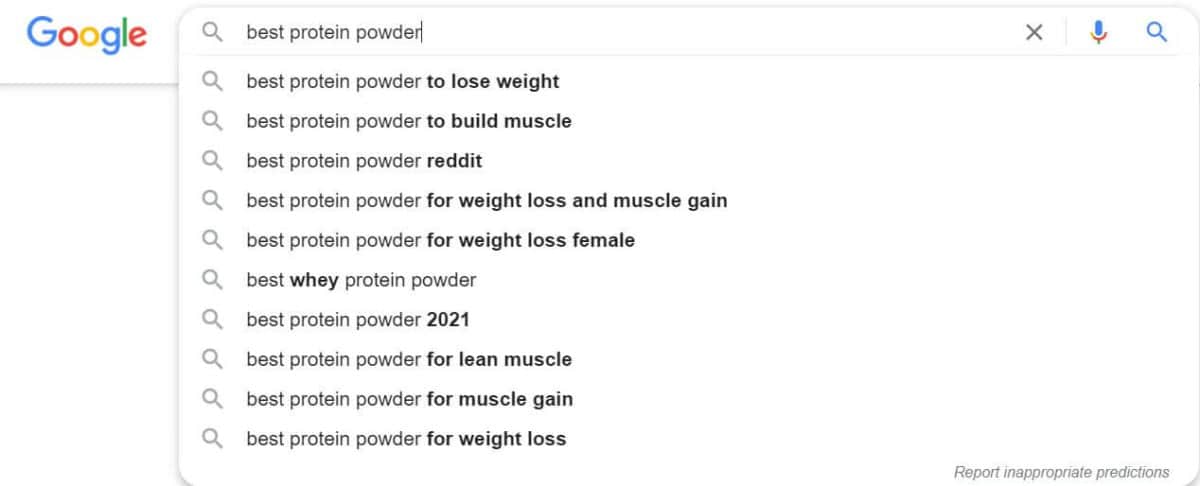Keyword Ranking Done Right – A 2021 Overview
Getting the Basics Right: SERPs, Search Algorithms & SEO
When it comes to keyword ranking, we need to start with the basics. It’s crucial to understand how search engines respond to a user query if you want any chance at ranking high in the Search Engine Results Pages (SERPs for short).
Google, the most popular web engine, ranks web pages algorithmically, and it does so based on agents such as the user’s location, language, device, and previous searches. All in all, your search engine performance doesn’t entirely depend on your website’s keyword strategy – so you need to understand what is achievable, as well as what is outside your grasp.
Google’s search algorithm (which is, in fact, not one but a synthesis of various algorithms) remains unknown for critical reasons. Yet, if you’re setting up a brand-new business website, you want to start drawing in organic traffic (non-payed traffic). Why own a website if no one lands on it to purchase your goods? This is precisely where search engine optimization steps in. For the most part, SEO is the process of improving your website performance to help it rank up higher for specific search queries.

Now, you might have seen the word “keyword ranking” tossed about on SEO-centered blogs and websites. In short, “keyword ranking” refers to your page’s specific spot (rank) on the SERPs for a particular user query. Keep in mind that most people don’t scroll past the fifth item on the first Google results page. Roughly 95% of all web traffic is contained there! So this simple fact renders the web insanely competitive for startups and smaller businesses with little budget for SEO. But we believe not all is lost, so stick with us!
Keywords & Why they’re Important for Your Website
First, let’s see why website keywords are crucial to how your website ranks in SERPs. A keyword (also known as a key phrase/focus keyword) is a word that best describes the content (and theme, purpose, aim) of a web page. When you choose a few keywords to focus your website content on, you do so hoping that they are precisely the ones your customers are looking for so that you maximize the chances of them reaching your website.
And this is why understanding search intent (or user intent) is vital to your online business performance. If your website pages don’t meet search intent, you are undoubtedly doomed to a low keyword ranking. You must also keep in mind that trends fluctuate, so you must check in with what your target audiences are looking for every once in a while.
Many keyword research tools can help develop a keyword strategy before you move on to composing and optimizing your website’s content. Here’s what to try out:
- SEMrush has a powerful in-built keyword research tool – but you’ll have to purchase it.
- Google’s Keyword Planner, which you can access through a Google Ads account.
- Insightful tools like Ubersuggest, Google Trends, and Answer the Public.
- WordPress plugin Yoast SEO Premium, which you can sync with SEMrush to benefit from more powerful keyword insights.

Basic Types: Long-Tail, Long-Tail, LSI Keywords
We’ve seen people categorize keywords into 7, 9, and even 18 types, but we’ll avoid getting lost in these subtleties for our current purposes. So, for now, we’ll trace out three basic categories: short-tail keywords (STKs), long-tail keywords (LTKs), and the cooler-sounding latent semantic indexing keywords (LSI Keywords).
1. Short-Tail Keywords (STKs)
If a search term contains fewer than three words, then it classifies as an STK. Shor-tail keywords designate broad topics and allow for little specificity. For instance, “digital services,” “SEO marketing,” and “online rebranding” are short-tail keywords that a digital agency might wish to rank high for.
So should we throw in a lot of these short, really borad keywords into our website content? Not really, because there is a catch with STKs. Their simplicity as general search queries makes them extremely popular and, therefore, competitive! Even so, relevant short-tail keywords should make up a fair portion of your on-site SEO strategy, next to the next type we’re about to introduce.
2. Long-Tail Keywords (LTKs)
Unlike STKs, long-tail keywords contain more than three words and boast lower search volumes. But don’t be quick to underestimate their potential. Longer also means they’re more detailed and precise. Consequently, they convey search intent much better and naturally attract relevant traffic to your web pages. A lower search volume also translates to less competition, so you will have higher chances of ranking well on an LTK compared to an STK.
Now let’s move on to a straightforward yet insightful tip for finding relevant LTKs (key phrases that people genuinely look for). Let’s assume you’d like to attract customers to your eCommerce platform, which sells high-quality protein powder. An effortless way to find product-relevant LTKs would be to type “best protein powder” (an STK) and allow Google’s powerful prediction tool to complete the query for you, as seen in the following picture:

In short, google automatically shows you the most relevant and popular search queries for your product based on what people are looking for.
You can also research the suggested LTKs (like “best protein powder for weight loss” or “best protein powder for lean muscle”) using one of the previously mentioned tools to compare them in terms of search volume and difficulty. Then, you may publish some genuinely informative blogs using the best LTKs you’ve chosen (which isn’t the same as spamming a keyphrase).
3. Latent Semantic Indexing Keywords (LSI Keywords)
Why isn’t spamming a keyword enough to rank up high for it? Well, let’s take a moment to think about it: nowadays, Google’s algorithms strive to analyze web pages in a more complex and accurate manner. To do that, Google will also look for and analyze what we call LSI (Latent Semantic Indexing) keywords. LSI Keywords are conceptually related terms and phrases that help a search engine understand web content on a deeper level.
Why the change? In short, to return more relevant and accurate results to its users. According to Backlinko, “In the early days of SEO, Google and other search engines would figure out a page’s topic-based 100% on the keywords they found on the page.” But things are changing, and what is considered SEO-friendly website content isn’t about using and reusing the same key phrase! Remember: it’s quality over quantity.
In fact, for blogs posts in particular, spamming one or two high-volume keywords shouldn’t be your primary focus. If we listen to Neil Patel, you can’t target the best keywords unless your website has a domain authority of 90. The good part, he says, is that keyword research is no longer the gold standard for keyword ranking and blog post traffic. Context heavily outweighs so-called “traditional” keyword research, which means you need to pay more attention to your content’s authenticity, unicity, and delivered quality, as well as its semantic variety and coverage of a given topic.
Lastly, Don’t Over-Optimize!
Here’s another tricky matter to keep in mind. With excessive keyword usage, you run the risk of over-optimizing your website content, making it sound highly unnatural to a real user (who may then decide to leave your website).
Nowadays, as we’ve already highlighted, content quality and relevance to a specific user query is what drives a robust SEO strategy. After all, what genuinely convinces a user or a potential customer to purchase or read something is the delivered value of your product or blog post, not how many times you’ve used (or abused) a certain keyphrase.
Final Insights
Considering the constantly evolving algorithms constantly and user interests, it’s tough to devise and adhere to a keyword strategy. On top of that, SEO features a strong technical side, which most people don’t bring up nearly enough.
However, a professional digital marketing agency can step in and do all of the challenging work for you. Don’t hesitate to shoot a line if you’re in trouble!












